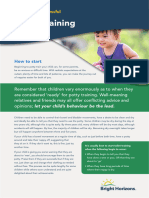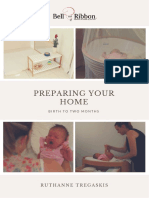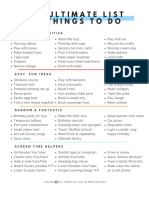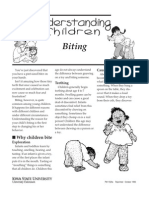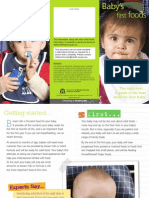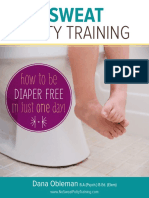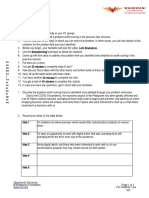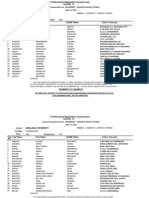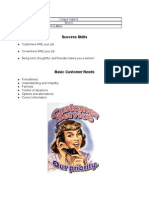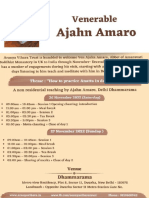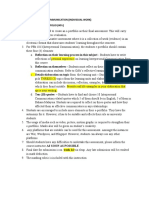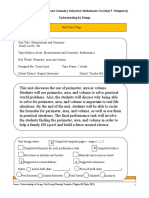No-Sweat Potty Training:
Fast-Start Guide
And Workbook
Tips, Charts and Checklists
Dana Obleman
�Copyright © 2011
Dana Obleman and Sleep Sense Publishing Inc.
All rights reserved.
No part of this book may be reproduced or transmitted in any form
or by any means, electronic or mechanical, including photocopying,
recording, or by any information storage and retrieval system, without
permission in writing from the publisher. Any resemblance between persons
described in this book and actual persons, living or dead, is unintentional.
This book is not intended to replace appropriate diagnosis and/or treatment,
when indicated, by a qualified mental health professional or physician.
� No-Sweat Potty Training: Fast-Start Guide And Workbook
Introduction
There’s no doubt about it: Potty training is a challenge for both children and
parents. Lucky for you, the No-Sweat Potty Training System was designed to make
it a simple and relatively painless process for everyone. This workbook will help
keep you on track with your goals and also help you see the progress your child is
making (I promise there will be progress!).
Use the checklists to make sure you’re as organized as possible before you
start, and also to make sure that you and your child are ready. There’s no point
in starting unless everyone is willing and able to do the work involved! In your
child’s case, this means showing the physical and emotional signs of being able to
cooperated with potty training, and in your case it means starting training during
a relatively stress-free time in your life.
Once potty training is underway, try recording your child’s daily progress so
you can see if things are getting better from day to day or if you’ve hit a snag that
needs unraveling ( stubbornness kicking in, regression, chronic bedwetting etc.).
Whatever the situation, when you write it all down you’ll be able to go back and
see that despite the ups and downs, sure enough, your child is well on her way to
being potty trained!
1
� No-Sweat Potty Training: Fast-Start Guide And Workbook
Chapter One
Ready…Set…Potty Train!
So! Is everybody ready to start this exciting new phase? Yes? No? Maybe?
Well, for those of you who aren’t entirely sure what you’re in for, here’s a quick
reminder of the No-Sweat Potty Training objectives:
• To train your child over one weekend using a reward system. After that
weekend your child will understand that she is expected to go to the
bathroom on the potty.
• To not go back to diapers again after the first day, except at night or
when travelling.
• To have your child switch from the potty to a regular toilet within one
week.
In other words, what you’re going for is toilet independence.
Sound good? Take a minute to write down how you feel about these objectives
and what you think might be positive or negative (easy or difficult) about them.
Even if you think the plan will never work, put it down and get it off your chest.
You can even write, “This is ridiculous. My kid will never be out of diapers after
one day!”
2
� No-Sweat Potty Training: Fast-Start Guide And Workbook
Objectives:
• To train your child in one day and not to go back to diapers
• To have your child move from using a potty to the toilet within a week
of training
• To teach your child to be responsible for pulling her own pants up and
down
• To have your child flushing the toilet and washing his own hands
3
� No-Sweat Potty Training: Fast-Start Guide And Workbook
Readiness Check-in
It’s crucial that your child be ready for the journey toward potty independence
before you begin. Age, development, and ability to communicate are all important
factors. But it’s equally important that you, the parent, is ready too.
Consider any extra stresses that might be taking place in your life. Ideally
you want a month or two with a fairly stable family schedule and no major
trips, renovations, or changes planned (i.e., don’t start training the week before
preschool begins!) Remember, it’s probably best to hold off on training if you are
experiencing the following issues in your life:
• Illness
• A new job
• A recent separation or divorce
• A move to a new home
• A major home renovation
• A new baby
4
� No-Sweat Potty Training: Fast-Start Guide And Workbook
Write down anything you think might make it more challenging for you to
focus on potty training:
Now write down the reasons you think you ARE ready for potty training.
Remember, you can write anything you want. Even this: “Because if I have to
change one more diaper I’m going to run screaming through the neighbourhood
like a crazy person!”
5
� No-Sweat Potty Training: Fast-Start Guide And Workbook
Is your child really ready?
Now it’s time to figure out how ready and willing your child will be. These
are all important factors, but it also isn’t black and white. Use your own judgment
when it comes to weighing them. For instance, some kids are very communicative
and easy-going, while others might be more stubborn and defiant. These don’t
necessarily have to be deal-breakers.
Bladder Control:
Can your child go a couple of hours without wetting her diaper? Remember, they
need muscle control to be able to potty train properly.
Awareness of body functions:
Does your child let you know if he’s gone poo or pee? Can he tell you about it
while it’s happening?
6
� No-Sweat Potty Training: Fast-Start Guide And Workbook
Physical Development:
Does your child have good motor control? Is he able to walk from room to room
independently?
Ability to be instructed:
Does your child cooperate if you ask her to bring you a toy or an object?
Even if your child exhibits the signs of readiness, that doesn’t necessarily mean
that she will be a willing participant! Every child is different, but be prepared to
stick to the program even if your little one isn’t so keen on it.
7
� No-Sweat Potty Training: Fast-Start Guide And Workbook
Chapter Two
Pre-Potty Training
Okay, you’ve determined that everyone is ready and you’re anxious to get on
with the plan. But before you dive in, make sure you’ve put all the pieces of the
puzzle on the table so they’re ready to be put together on Training Day.
Select a weekend
First things first. You need to pick a weekend when you will be home and have
very few obligations, errands or social engagements outside of the house. Check
with the rest of the “team”(spouse, older siblings etc.) to make sure the schedule
works for them as well. You just want to make sure you don’t schedule the potty
training weekend on the same days as an older child’s soccer tournament or dance
recital.
Potential Dates for Training Weekend:
8
� No-Sweat Potty Training: Fast-Start Guide And Workbook
In the weeks leading up to your training weekend your family can all work
together and use the following tools to prepare your child for what’s to come. The
less surprises the better!
1. Use your words
Make casual comments while changing diapers such as “Your diaper is wet
because you went pee.” This helps your child notice the difference between
feeling wet and dry.
2. Point out the obvious
When your child makes telltale facial expressions say, “Oh, are you going
poo now?” This will start to help your child connect the words and the
action.
3. Monkey See, Monkey Do
Be an example for your child whenever possible by letting him see you go
to the bathroom. It’s especially helpful having the same-sex parent (or older
sibling) be the one to model the toilet behaviour.
4. Following Directions
In order for your child to go through the potty training process, he needs
to be willing (for the most part!) and able to take some direction. These can
be simple requests, like asking him to bring you a magazine, or pick up a
dropped teddy bear.
5. Promote independence
Help your child celebrate the fact that she CAN do certain things on her own.
This will help when you’re encouraging her to use the potty like a big girl.
Point out when she’s doing something “grown up” like brushing her own
teeth or putting on her own clothes. You can also ask her to help sweep the
floor or wipe the table.
6. Read potty books together
Children learn so much from stories, and it can sink in a lot better than just
having a parent tell them what’s going to happen. They will identify with the
characters in the book and want to try out the behavior too!
7. Practice hand-washing
You can teach your child this one important step long before actual potty
training takes place. Buy a step stool, some fun soap and their own little
towel to make it more fun for them.
9
� No-Sweat Potty Training: Fast-Start Guide And Workbook
Daily Check-in
In the week leading up to training day, chart how you used the tools listed to
prepare your child for potty training. It’s a good way to get a feel for what might
lie ahead. For instance, if your child refused to follow ANY direction all week, you
know you might be in for a bit of a battle once potty training starts.
Monday
Tools Used:
Result:
Tuesday
Tools Used:
Result:
10
� No-Sweat Potty Training: Fast-Start Guide And Workbook
Wednesday
Tools Used:
Result:
Thursday
Tools Used:
Result:
Friday
Tools Used:
Result:
11
� No-Sweat Potty Training: Fast-Start Guide And Workbook
Chapter Three
Training Day
Here we go! Are you excited? Your diaper days are almost over. Now it’s just a
matter of making sure you have everything you need for the weekend and you’re
ready to start!
Supply Checklist
• Potty chair
• Lots of underwear (at least ten pairs)
• Plenty of juice and snacks
• Small rewards like Smarties or jelly beans
• Plastic bags for wet clothing
• A reward chart
• Stickers
The Night Before
In the days leading up to training weekend you can explain to your child that
you are going to have a special day together where you teach him how to use the
potty, have a lot of fun and get some treats. Explain that after that day he won’t be
wearing diapers anymore, except when he goes to sleep at night.
12
� No-Sweat Potty Training: Fast-Start Guide And Workbook
Every child is different, so write down some ideas for what you can say to your
child to get him excited!
The Plan
Remember, there’s nothing to worry about. The plan is simple! You’re going
to spend the whole day with your child, encouraging her to use the potty and
rewarding her when she does. Tell her it’s going to be lots of fun, and treat it like
a celebration as much as possible.
Step One:
Bye Bye, Diapers!
When your child wakes up the first morning, explain that this is the day you’ve
all been getting ready for and that once this diaper comes off there will be no
diapers all day—just big-kid underwear!
Step Two:
Hello, Potty!
Introduce your child to the potty and tell him that this is where the poo and pee
goes, just like the real toilet where mommy and daddy and brothers and sisters go.
Explain to her that every single time she uses it properly she will get a treat and
show her the treats so she knows you’re not bluffing. Remember to be enthusiastic.
You want your child to feel like something exciting is happening.
13
� No-Sweat Potty Training: Fast-Start Guide And Workbook
Step Three:
Playtime!
Spend the day letting your child play, and make sure to stick close by. This is a
great chance to spend some quality time with your child. Keep an eye on him and
ask regularly if he has to use the potty. You can guide him over if it’s obvious he
does need to use it. Give him a reward every time, even if it was prompted by you.
The Reward Chart
Use the reward charts (you’ll find them in the Member’s Area where you
downloaded this workbook) as extra motivation for your child. Have a bunch of
stickers on hand; you can buy your child’s favourite cartoon characters, animals,
or trucks and butterflies…whatever will make her happy. Every single time your
child goes pee or poo on the potty, even if it’s with lots of encouragement from
you, let her choose a sticker and put it on.
Accidents Happen…
There will almost certainly be accidents on Training Day, but remember to
remain calm and not get frustrated. The trick is to celebrate the behaviour you
want to see without criticizing your child for forgetting to use the potty. If and
when accidents do occur over the first few days, you can record them here.
Unlike the sticker chart, this is not to be shown to your child; it is not meant to
be a record of your child’s failure, but useful information that can help you figure
out why the accidents might be happening. For instance, if you record five or six
accidents that happened while your child was watching a favourite TV show, that
gives you a clue that he needs prompting when he’s distracted, or that you need to
shut off the TV for a minute to get him to go to the potty.
Graduation Ceremony
At the end of the first long day, you can present your child with a certificate to
show that she’s officially graduated from being a little kid who uses diapers to a
big kid who doesn’t!
14
� No-Sweat Potty Training: Fast-Start Guide And Workbook
Accident Record
1. Time:_________ Suspected Reason:________________________________________
2. Time:_________ Suspected Reason:________________________________________
3. Time:_________ Suspected Reason:________________________________________
4. Time:_________ Suspected Reason:________________________________________
5. Time:_________ Suspected Reason:________________________________________
6. Time:_________ Suspected Reason:_______________________________________
7. Time:_________ Suspected Reason:________________________________________
8. Time:_________ Suspected Reason:________________________________________
9. Time:_________ Suspected Reason:________________________________________
10. Time:________ Suspected Reason:________________________________________
15
� No-Sweat Potty Training: Fast-Start Guide And Workbook
Chapter Four
Toilet Independence
By now your child is well on her way to achieving toilet independence. You
can keep track of this progress to see what areas are working out just fine and
which ones might need a little extra effort and encouragement on your part.
These are the ways you can encourage toilet independence:
Hip Hip Hooray!
Continue to be excited every time your child uses the potty and keep using the
rewards until you feel that your child is no longer motivated by them or forgets to
ask you.
Ways you encourage your child to keep up the good work:
16
� No-Sweat Potty Training: Fast-Start Guide And Workbook
Keep Communicating
Talk about your child’s new skills with the potty and update other family
members at breakfast or dinner about your child’s progress when he’s around and
can hear you. This helps encourage him and remind him that he’s graduated to
big-boy status and can now do something that all the older people in the house do.
Ways you and your family communicate with your child about her potty
progress:
What Happens When I’m at Work?
It’s hard not to worry that your newly trained toddler will forget everything
you’ve taught him over the training weekend, or lose any momentum he may have
built up if you have to take his potty show on the road. But if you have to work,
there’s no reason to worry. The exact same plan still applies, whether your child
is going to daycare, preschool, Grandma’s, or a trip to the pool. You just need to
have a good plan and share it with the other people involved.
Working with Caregivers
If your child goes to daycare or preschool you can talk to the care provider
about whether it will work for you to bring your own potty to put in the bathroom,
but your child might be willing to use the facilities there now that he’s diaper-free.
Preschool bathrooms are especially designed for little bodies, and it won’t be as
17
� No-Sweat Potty Training: Fast-Start Guide And Workbook
intimidating as the big toilet and too-high sink at home. You can even give the
caregiver a reward chart to be used while your child is at daycare or preschool.
While it’s great to communicate verbally with your childcare providers, it
might also be a good idea to give them a written plan, so it’s very clear what you’re
trying to accomplish. It may be that some of the things won’t be possible in a
daycare setting (Many daycare workers will balk at doling out Smarties, especially
in front of the other children).
Here’s a sample letter for your caregiver
Dear___________________________________________
We recently potty trained our son_____________________. We
greatly appreciate your care and attention toward our child
and would like to keep you in the loop with our potty training
arrangements so that he will receive consistent messages.
Here’s our plan:
• We offer a reward every time he uses the potty (reward bag
will be provided)
• We let him choose a sticker for the reward chart every time
she uses the potty
• We remind him often throughout the day that he may want
to try going to the potty
• We never use diapers (changes of clothes will be provided)
Thank you so much for helping us stick to our plan!
18
� No-Sweat Potty Training: Fast-Start Guide And Workbook
Progress Report: First Week at Daycare
Day 1. Number of times your child used the potty: _____________________
Accidents: ______________________________________________________
Day 2. Number of times your child used the potty: _____________________
Accidents: ______________________________________________________
Day 3. Number of times your child used the potty: _____________________
Accidents: ______________________________________________________
Day 4. Number of times your child used the potty: _____________________
Accidents: ______________________________________________________
Day 5. Number of times your child used the potty: _____________________
Accidents: ______________________________________________________
19
� No-Sweat Potty Training: Fast-Start Guide And Workbook
Chapter Five
The Problem with Poo
So maybe potty training has been wildly successful and your child is happily
going off to pee on the potty on her own…but still refuses to poo on the potty.
You might be getting worried when she seems to hold it in for days. Or when she
happily just goes in her pants time after time, creating a rising level of frustration
and confusion on your part. Diapers are looking more and more attractive with
every new load of laundry…
Don’t give up, Mom and Dad! There’s hope for your little guy yet.
Here are the most likely reasons for
your child’s aversion to going poo on the potty:
Too Busy!
A lot of kids just don’t like taking the time out of playing or watching their
favourite show to go to the potty to poo.
Solution
If he goes in his pants, calmly walk him to the bathroom, get him to remove
his pants, sit on the potty and wipe. He can also dump out the contents of his
underwear into the toilet, wash his hands, and take his clothes to the laundry room
and put them in the washing machine. He’ll soon figure out that it takes a lot less
time to go to the potty than to clean up after going in his pants!
20
� No-Sweat Potty Training: Fast-Start Guide And Workbook
Bad Experience
Some toddlers have what might seem like an irrational fear of the big toilet.
This is very common, and usually it’s something as simple as having been splashed
by the toilet water.
Solution
Try talking to her about it, reassure her that she’s safe, accompany her when
she has to go, and make sure that the seat is fitting properly on the toilet and the
step stool doesn’t slip on the floor.
If you suspect splashing was the problem, you can teach her to lay a few sheets
of toilet paper on the surface of the water so it doesn’t happen again.
Extra Attention
Kids are smart. And some, because you’ve made such a big deal about potty
training, know that they can push your buttons if they don’t cooperate. This can
cause a power struggle in which your child might intentionally go in his pants just
because he knows how exasperating it can be for you!
Solution
Try not to make too much of a fuss when he has an accident. Just deal with it
in a calm, rational manner and follow the steps in the first example (leading him to
the potty and getting him to clean up after himself)
Constipation
Some kids have such an aversion to going poo on the potty they can actually
become constipated from holding it in. Alternatively, constipation could be what’s
causing the problem in the first place.
21
� No-Sweat Potty Training: Fast-Start Guide And Workbook
You are probably dealing with constipation if your child has:
• Less than three bowel movements a week
• Small or hard bowel movements that cause pain
• Tummy aches
• Been acting irritable or clingy
Solution
Offer lots of liquids like water and unsweetened fruit juice and make sure your
child is getting plenty of healthy fresh fruit and vegetables and whole grains.
Bring your child to the toilet regularly, especially about fifteen or twenty
minutes after a meal, and encourage her to try and go. Don’t make a big deal about
it if she doesn’t, though.
What problems are you experiencing with your child going poo?
What do you suspect, based on the common culprits listed above, might be the
problem?
22
� No-Sweat Potty Training: Fast-Start Guide And Workbook
Poo Chart
For one week, try recording the number of times your child goes poo in a day
and how many times he went on the potty vs. in his pants. Using the tools and
solutions, see if you notice any progress by the end of the week.
Monday
Tuesday
Wednesday
Thursday
23
� No-Sweat Potty Training: Fast-Start Guide And Workbook
Friday
Saturday
Sunday
Remember to call a doctor if any of the following issues are occurring:
• If the constipation is chronic, as it may be caused by a food allergy
such as lactose intolerance.
• If your child hasn’t had a bowel movement for more than four or five
days
• Your child isn’t urinating frequently (every few hours)
• Your child’s abdomen is hard and swollen
• There is blood in the stool or urine
• Your child is vomiting and feverish and complains of pain when he
tries to poo
24
� No-Sweat Potty Training: Fast-Start Guide And Workbook
Chapter Six
Night Training and Naps
Remember, day training and night training are completely different! Just
because your child slips up at night doesn’t mean she isn’t trained. In the first few
weeks, months, or even year after potty training, bedwetting is very, very common.
However, accidents at night need to be treated very differently than daytime
accidents.
Nighttime accidents
At night, the child isn’t operating with his conscious mind. So while he might
be playing games with you during the day when he pees in his pants instead of
heading to the potty, at night it’s a very different story. He’s not playing games
because when he’s asleep, he simply isn’t thinking about it at all.
For a child to be able to wake himself up, get out of bed and walk to the
washroom to go pee, he needs to have a fully developed bladder and his body has
to have learned to take cues from his brain. This can take a long time for some
children, which is why you need plenty of patience! And not to worry. There are a
few other things that can help too.
Plastic Mattress Covers
Every toddler who is recently trained should be sleeping on rubber mattress
covers. Even if your child seems to be trained and isn’t wetting the bed, it’s still a
25
� No-Sweat Potty Training: Fast-Start Guide And Workbook
good idea to use mattress covers for a while until you’re sure she’s able to stay dry
at night.
Diapers and Pull-ups
It’s absolutely fine to keep him in diapers or pull-ups at night, and should stay
in them until he’s had a dry diaper every morning for at least a week.
Tips for staying dry at night:
• Take your child to the potty several times before bed
• When he’s on the potty going pee, explain that he is using muscles to pee
and to stop peeing. You can ask him to just notice what it feels like when
he has to go
• Don’t give her too much liquid close to bedtime
• Try waking him up late, maybe right when you’re about to go to bed, to
see if he has to pee
• Make sure she has a nightlight in her room and in the hallway so she can
see her way to the bathroom.
• Keep your child’s room at a comfortable temperature.
26
� No-Sweat Potty Training: Fast-Start Guide And Workbook
Nighttime Chart for the first two weeks of training
Week 1 Mon Tue Wed Thurs Fri Sat Sun
Dry night
or
accident?
Tools used
Week 2 Mon Tue Wed Thurs Fri Sat Sun
Dry night
or
accident?
Tools used
Whatever your potty training issues, just remember that all parents have gone
through it before and they all survived and came out the other side with a potty-
trained child! So stay calm, stick to the plan, and this phase will be over before you
know it.
27
� No-Sweat Potty Training: Fast-Start Guide And Workbook
Notes:
28

